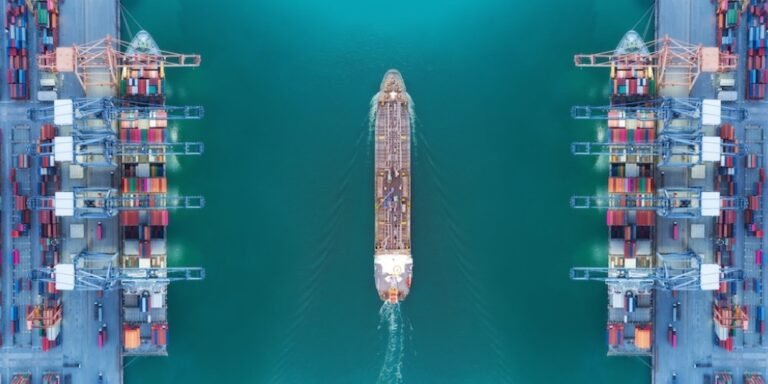Ports serve as the beating heart of global trade, linking economies, industries, and communities. To maintain efficiency, safety, and competitiveness, ports require constant modernization and strategic investment. That is where the Guide to the Port Infrastructure Development Program becomes essential for policymakers, port authorities, and businesses that depend on maritime commerce. This federal program provides a structured approach to funding and planning improvements that strengthen U.S. ports and keep supply chains moving smoothly.
What Is the Port Infrastructure Development Program?
The Port Infrastructure Development Program (PIDP) is a grant initiative administered by the U.S. Maritime Administration (MARAD). Its primary mission is to support projects that improve the safety, efficiency, and reliability of the movement of goods into, out of, and within U.S. ports. By offering financial assistance, the program helps ports upgrade facilities, expand capacity, and adopt sustainable practices that align with modern shipping needs.
When reviewing the Guide to the Port Infrastructure Development Program, one discovers that its impact extends beyond basic infrastructure. It also emphasizes economic growth, job creation, environmental stewardship, and the strengthening of supply chains that are critical to both national security and commerce.
Objectives of the Program
The program focuses on multiple objectives that align with broader transportation and economic goals. Among them are:
- Enhancing efficiency: Supporting projects that reduce congestion, improve cargo handling, and shorten turnaround times.
- Modernizing infrastructure: Funding upgrades such as new terminals, berths, intermodal connections, and dredging projects.
- Environmental sustainability: Encouraging cleaner operations through electrification, renewable energy, and emissions reduction.
- National security: Ensuring ports can handle strategic cargo and defense-related activities.
- Community benefits: Promoting projects that create local jobs and stimulate regional economies.
Understanding these goals is vital when navigating the Guide to the Port Infrastructure Development Program, as proposals must clearly align with at least one of these priorities to be considered competitive.
Eligibility for Funding
A critical section in any Guide to the Port Infrastructure Development Program concerns eligibility. Generally, the following entities can apply:
- Public port authorities or agencies.
- State and local governments.
- Tribal governments.
- Special districts with transportation responsibilities.
- Private-sector partners, when working in collaboration with public entities.
Eligible projects can vary widely, from major construction efforts to smaller-scale technology improvements. However, all proposals must demonstrate a measurable benefit to the public and to the port’s long-term operational success.
Types of Projects Supported
Projects that receive funding under the PIDP typically fall into a few categories:
Infrastructure Expansion
This includes new terminals, expanded docks, and improved intermodal facilities that connect ports with highways, railways, and airports.
Safety and Security Enhancements
Projects that modernize navigation systems, enhance cybersecurity, or strengthen physical security measures.
Environmental and Resilience Initiatives
Efforts to reduce environmental impact—such as installing shore power, upgrading stormwater systems, or enhancing resilience to climate change.
Efficiency Improvements
Projects that use new technology, automation, or logistics strategies to streamline operations and reduce bottlenecks.
Each of these categories is thoroughly detailed in the Guide to the Port Infrastructure Development Program, helping applicants tailor their proposals to the program’s core mission.
Application Process
Navigating the application process can seem daunting, but the Guide to the Port Infrastructure Development Program provides clarity. Typically, the process includes the following steps:
- Notice of Funding Opportunity (NOFO): MARAD releases an annual announcement detailing the available funding, eligibility criteria, and deadlines.
- Project Planning: Applicants must prepare detailed plans, including engineering studies, cost estimates, and environmental reviews.
- Submission: Applications are submitted through the federal grants portal, Grants.gov.
- Review and Scoring: Projects are evaluated based on alignment with program goals, technical feasibility, cost-effectiveness, and community impact.
- Award and Implementation: Selected projects receive grants and begin work, often requiring progress reports and compliance checks.
Understanding each step in this sequence is crucial for applicants hoping to maximize their chances of success.
Benefits of the Program
The benefits of the Port Infrastructure Development Program reach far beyond individual ports. As highlighted in the Guide to the Port Infrastructure Development Program, these advantages include:
- Stronger supply chains: Efficient ports reduce delays and keep goods moving across the nation.
- Economic growth: Investments create jobs, stimulate trade, and support local businesses.
- Sustainability: Cleaner, greener operations reduce the environmental impact of shipping.
- Competitiveness: Modernized ports attract more business and strengthen the U.S. role in global trade.
- Resilience: Improved infrastructure helps ports withstand natural disasters and evolving market demands.
By combining these benefits, the program ensures ports remain vital assets in both economic and strategic contexts.
Challenges and Considerations
Despite its many advantages, applying for and managing PIDP grants involves challenges. The Guide to the Port Infrastructure Development Program cautions applicants to be aware of:
- Complex applications: Preparing comprehensive documentation can be resource-intensive.
- Competition for funds: With limited funding and high demand, not all projects are selected.
- Long timelines: Infrastructure projects often require years of planning and execution.
- Compliance obligations: Grant recipients must meet strict federal requirements for reporting and accountability.
Addressing these challenges early can improve the chances of a successful application and smooth project delivery.
Conclusion
Ports are more than transit hubs—they are economic engines that power trade, industry, and community development. The Guide to the Port Infrastructure Development Program offers a roadmap for accessing federal support to ensure these vital gateways continue to thrive. By understanding eligibility, aligning with program objectives, and preparing strong applications, stakeholders can take full advantage of this opportunity to modernize U.S. port infrastructure.
